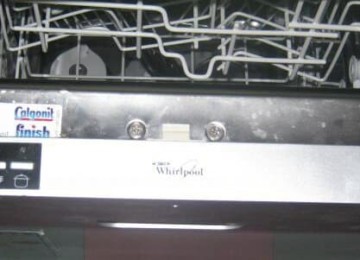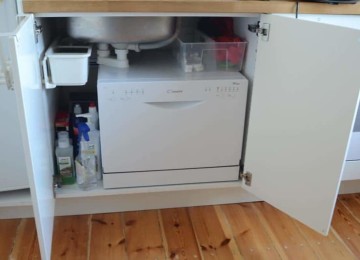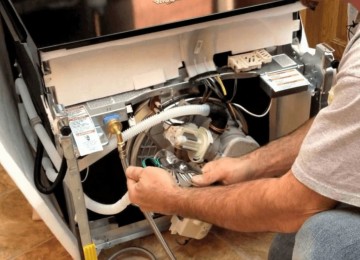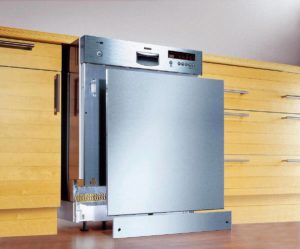 Owners of modern kitchens often hide appliances behind the front panel to give them an aesthetic appearance. This method of organizing space has a number of advantages. Why is it necessary to install a front on a dishwasher, what materials are used for this, and how to properly organize the work?
Owners of modern kitchens often hide appliances behind the front panel to give them an aesthetic appearance. This method of organizing space has a number of advantages. Why is it necessary to install a front on a dishwasher, what materials are used for this, and how to properly organize the work?
What is a dishwasher front?
The facade is a decorative panel attached to the door of the dishwasher. It is made from furniture materials, so you can choose a product that fits perfectly into the overall interior of the kitchen. Such a decorative detail has not only an aesthetic function. By hiding the body of a household device, it protects it from exposure to aggressive environments.
In general, the advantages of using such panels include:
- The ability to hide equipment that does not correspond to the overall design of the room.
- Selection of a household device based on technical characteristics, without taking into account the appearance features.
- A protective function that allows you to protect the surface of the product from excessive heat, grease splashes and humidity.
- Safety in apartments where small children grow up. The buttons on the panel are almost invisible, so kids won't press them.
- Increased sound insulation thanks to additional pads. Some products are equipped with special inserts that are installed between the machine door and the front panel. They perfectly absorb noise and vibration during operation of the unit.
- Strength. Decorative elements are not only distinguished by their impeccable appearance, but also give the entire structure special strength.
The choice of material should be given great attention. Materials that deform or lose their quality when exposed to high temperature or moisture are not recommended. They must be reliable, practical and durable.
What materials and decor are used for the facades of built-in dishwashers?
Various materials are used to make cladding panels. The most popular is MDF. It has many advantages:
- withstands temperature changes;
- not exposed to the negative effects of moisture;
- does not emit toxic substances that can harm human health;
- durable and reliable.
If the doors of other kitchen furniture accessories are made of MDF, then there should be no doubt. The main thing is to choose a material that matches the color of the rest of the furniture.
Natural wood is a very expensive material, so it is extremely rarely chosen to decorate a dishwasher. In addition, he needs special care. However, veneer - a thin layer of wood - is often used for decorative design of a structure.This decor gives the product a presentable appearance.
The most affordable material for cladding is chipboard.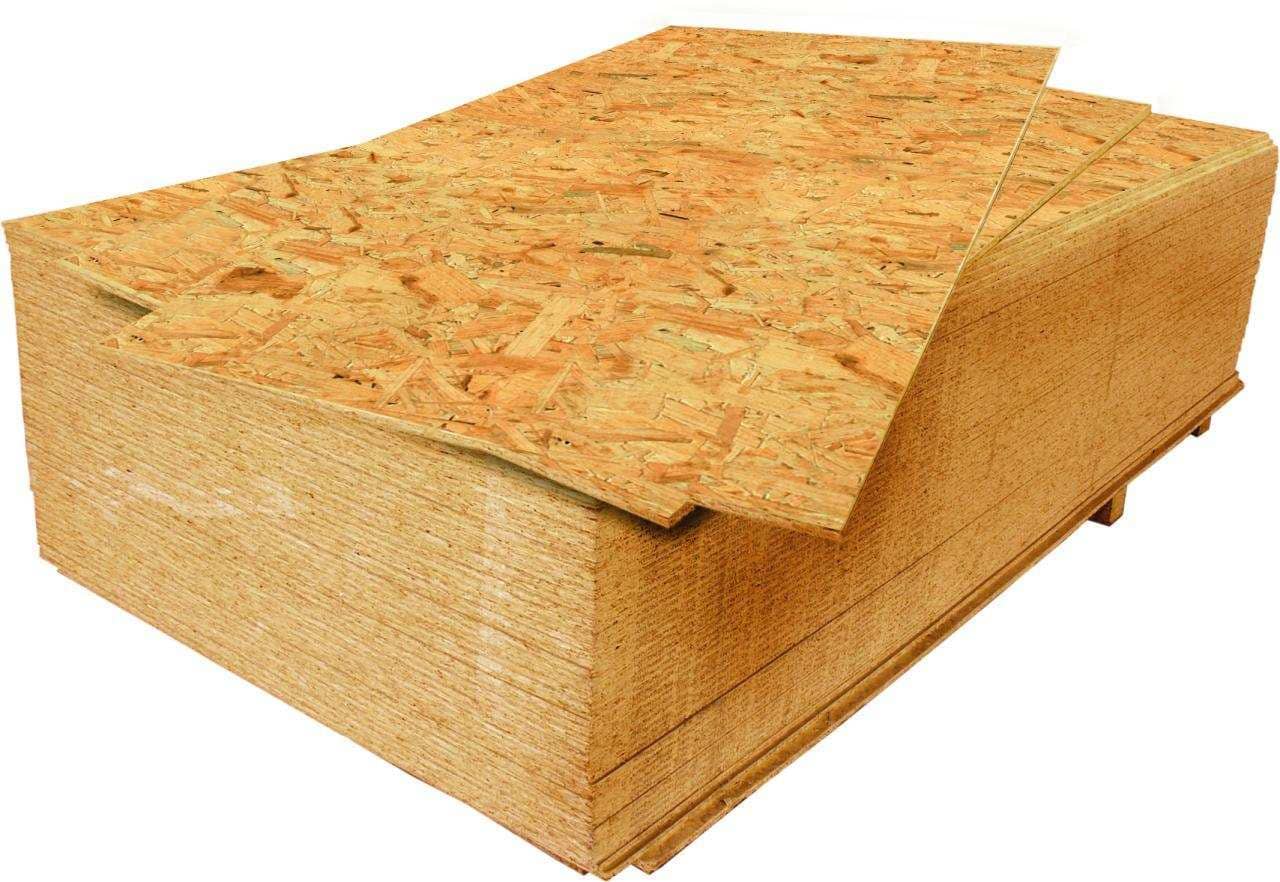 However, it should be taken into account that it is short-lived, quickly deforms, and if the integrity of the coating is damaged, it releases harmful substances.
However, it should be taken into account that it is short-lived, quickly deforms, and if the integrity of the coating is damaged, it releases harmful substances.
A decorative coating is needed to disguise the structure and give the coating the desired aesthetic properties. After final surface treatment, it is impossible to determine that there are household appliances behind the panel. It looks like an ordinary kitchen cabinet. For this purpose, in addition to veneer, the following finishing materials are used:
- enamel;
- plastic;
- glass;
- metal.
Also in some cases PVC film is used. However, this is not the best solution, since under the influence of heat it quickly peels off and loses its original properties.
Properly selected fittings and various decorative elements will emphasize the originality of furniture accessories and the impeccable taste of the owners. This is an excellent solution for giving the surface a finished look.
Design features of built-in dishwashers
There are many different models of dishwashers. In addition to structures that stand alone, manufacturers produce built-in options. They can be partially or completely embedded. Freestanding devices can be installed anywhere in the room. Well, other types require additional space in the niche of the kitchen unit. They are the most common, as they allow you to ergonomically and practically arrange household appliances in the kitchen.
To install built-in equipment, you need a compartment specifically designed for this purpose.Its distinctive feature is the absence of a bottom and back wall. Fully built-in models can be hidden using facade panels, which allows you to keep the kitchen design in the same style. The equipment is installed on supporting legs or directly on the floor. The open rear space allows for hoses for water supply and sewer drainage. A compartment or cabinet intended for installation of equipment must have reliable walls and a top part - a table top. After all, it is to them that the dishwasher body is attached. The front panel is connected to the machine door.
Some machine models are supplied complete with a template for installing a decorative facade. In some cases, it is advisable to mount the panel on the door before it is hung on the equipment.
Preparing space for a dishwasher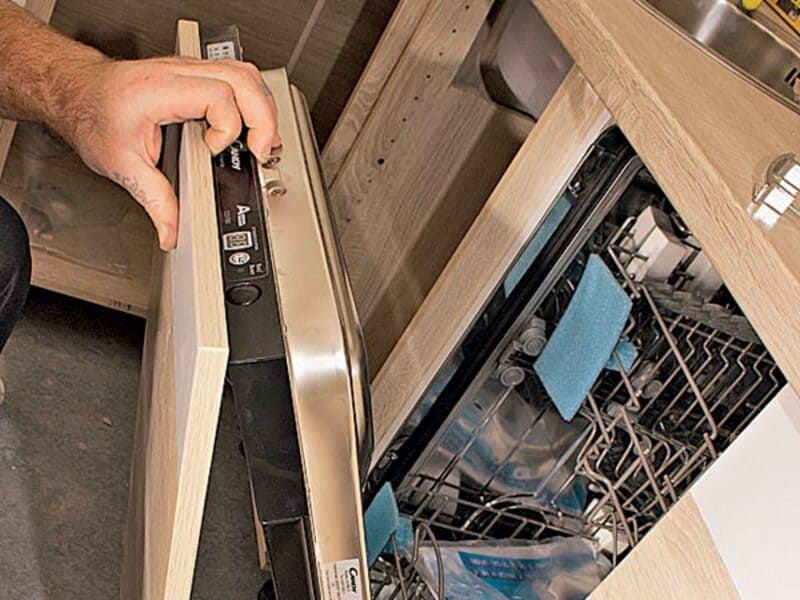
Many craftsmen ignore this stage, proceeding with installation on an unprepared surface. Subsequently, this is fraught with the emergence of various problems and shortcomings. Also, this approach can lead to difficulties during the installation of equipment, loss of time and finances.
First of all, before starting work, you should pay attention to the condition of the floor. The surface must be reliable and durable. If the kitchen has an old floor with creaky floorboards, it is advisable to strengthen them or take care of a stable base. The fact is that modern washing mashine models can weigh up to 60 kg, so a weak coating may not withstand such a load. It is recommended to install the equipment on a flat surface, this can be a linoleum or tile-based covering.
You should also take into account the proximity of the connected device to communications.The distance to the water supply pipes should not exceed three meters, otherwise the equipment may not work satisfactorily, since the machine parts are under increased load. The connection is made to cold water supply. If there is a need to connect to hot water, then you need to make sure that the machine manufacturer has provided for this possibility in the design. Connection to the sewer is also necessary; you need to ensure a reliable, tight connection to the drain. For this purpose, special consumables are selected.
And, of course, the most important step is connecting to the power supply. If there is no outlet nearby, it must be installed in accordance with electrical safety requirements. Even if there are no surges in the network, it is recommended to connect the device through a voltage stabilizer. The device guarantees safe operation of the machine over a long period. Statistics show that a large number of dishwashers fail due to voltage surges. This useful device will help protect this and other electrical equipment in the house from network problems.
At what stage should the façade be attached?
Installation of household appliances in stages. The most crucial moment is considered to be connecting to the electrical network, water supply and sewerage system. Only after this do they begin to decorate the front wall of the dishwasher.
During the process of fitting the workpiece, the machine is in its permanent place. It is important that the panels of the device are on the same level with similar elements of the kitchen unit located next door. However, before work is carried out to secure the panel to the door, it is pulled out.This is necessary in order to have convenient access to all sides of the structure.
It is not recommended to turn on the machine without the decorative element installed. The overlay, as you know, acts as an additional insulator of heat and noise. In addition, the dishwasher can only work fully if it is closed on all sides.
Sometimes it is possible to install a façade before connecting a household unit. However, this installation option is used only in exceptional cases. For example, when a connection delay is caused by other repair and construction work carried out on the power line. In order not to waste time, craftsmen first decorate the device and then connect it to communications.
Determining the dimensions of the decorative panel
The final result of the work depends on how correctly the dimensions of the facade panel and its type are selected. To do this, you need to take into account the dimensions of the machine itself. The standard width of the device is 60 cm, the width of narrow models is 45 cm. The height of such household appliances is in the range of 80-85 cm, although there are examples with a height of no more than 50 cm. As a rule, such compact devices are chosen by owners of small kitchen spaces.
Experts emphasize the importance of choosing a front panel that matches the height of the machine. The upper part of the overlay should be level with the tabletop, a deviation of several centimeters is allowed so that the design looks organically with the facades of adjacent cabinets. In this case, you need to make sure that the doors open freely and that the remaining part does not interfere with this.
There are device models whose dimensions differ greatly from accepted standards.Therefore, it is better to equip a niche for appliances or buy a new kitchen set after purchasing a washing mashine. Only in this case can you make sure that the equipment will be perfectly installed and fixed in the box. If the height of the panel is slightly larger, it is not worth cutting it, since after removing the protective film, moisture will get inside the material and cause its rapid deterioration. It should be noted that the height of the dishwasher legs can be adjusted. This allows you to change the height of the equipment by a couple of millimeters.
Often, in order to determine the optimal dimensions of the decorating panel, you just need to read the instructions. This is where information is provided that may be useful in selecting a panel. The manufacturer specifies the required width, thickness, length and allowances of the product so that it fits the device accordingly. This is very convenient, since there is no need to make any calculations or measurements.
Preparation of tools and materials
To ensure that the work does not disappoint and only brings pleasure, you should prepare for it correctly and select the right tools and materials. The following devices and working tools are suitable for this:
- Screwdriver.
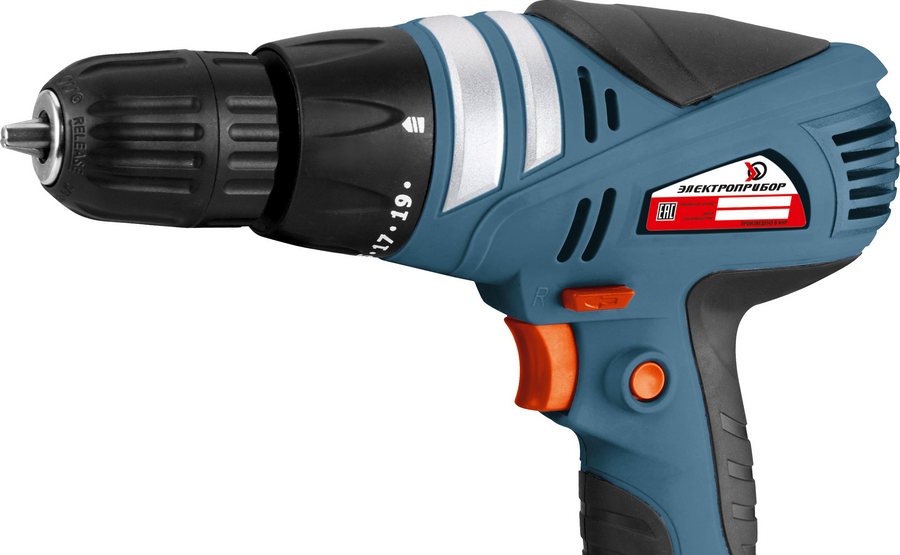 An indispensable electrical device for quickly loosening or tightening screws. You can also use it to make holes for future fastenings.
An indispensable electrical device for quickly loosening or tightening screws. You can also use it to make holes for future fastenings. - Drill.
 Use if there is no screwdriver available. It is also necessary for drilling, helps to make holes in the panel. The diameter of the drill is selected according to the diameter of the screws.
Use if there is no screwdriver available. It is also necessary for drilling, helps to make holes in the panel. The diameter of the drill is selected according to the diameter of the screws. - Roulette.
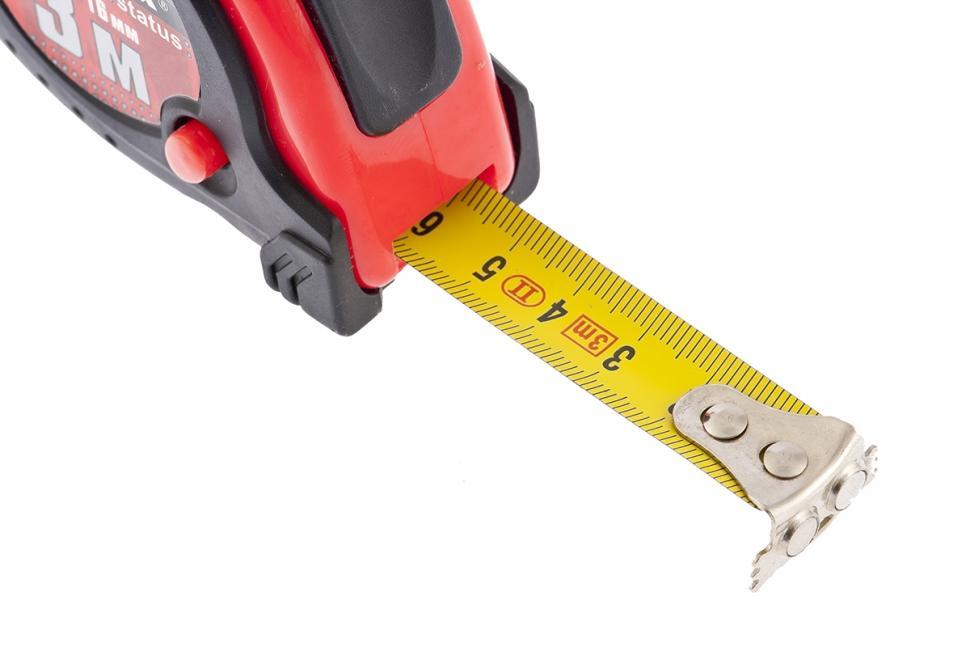 It is needed in order to correctly perform any measurements and ensure that the actions are correct.
It is needed in order to correctly perform any measurements and ensure that the actions are correct. - Screwdrivers.
 You cannot do without this tool. The characteristics and purpose of the tool depend on the type of fasteners that need to be fixed.
You cannot do without this tool. The characteristics and purpose of the tool depend on the type of fasteners that need to be fixed. - Awl.
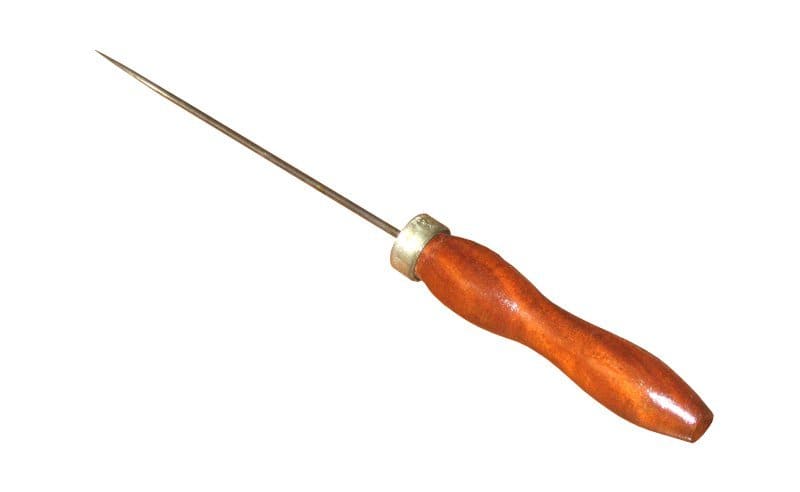 Sometimes it is necessary to pierce neat holes in fragile materials; for this it is advisable to use a sharp, durable object.
Sometimes it is necessary to pierce neat holes in fragile materials; for this it is advisable to use a sharp, durable object. - Pencil.
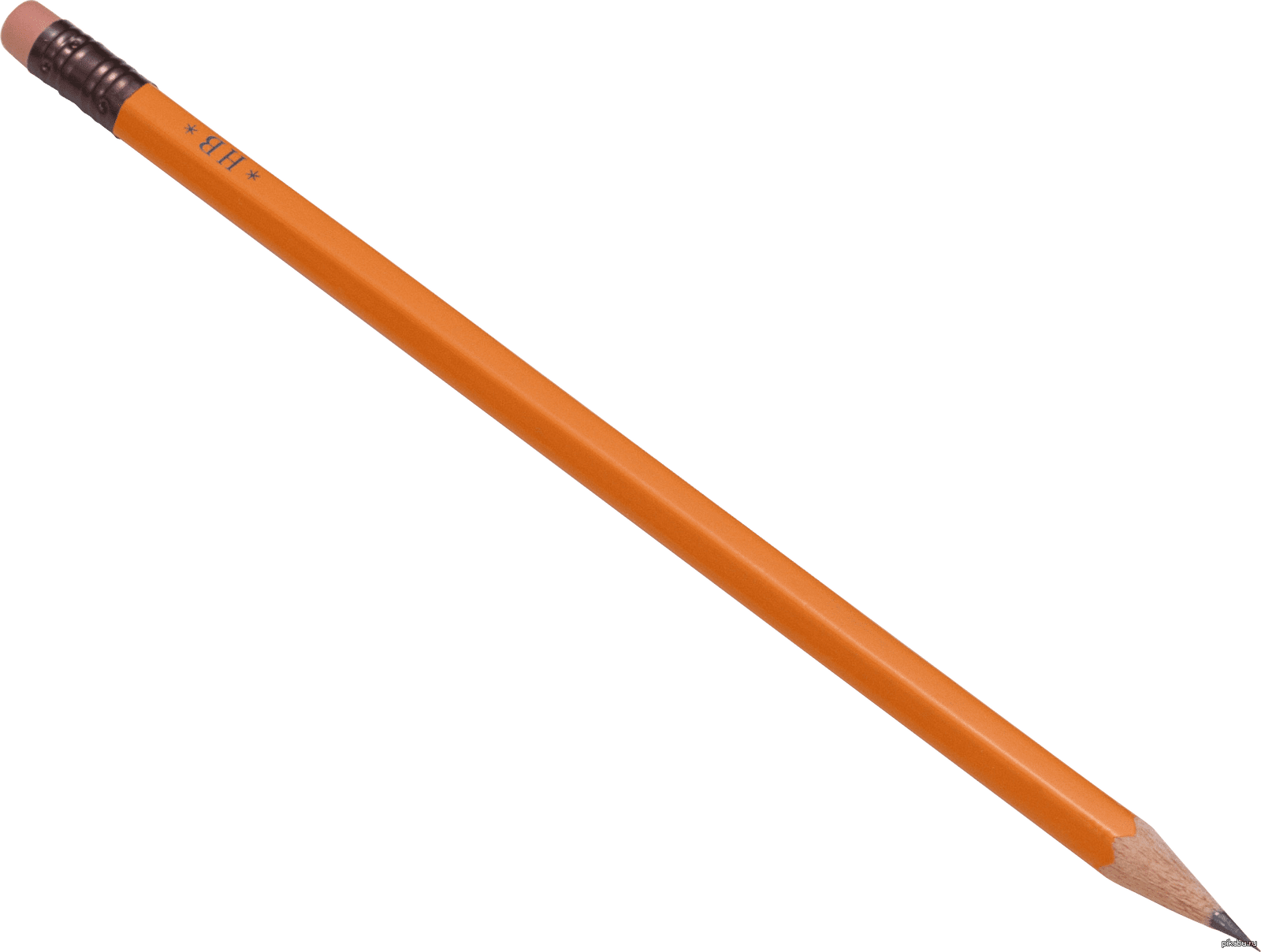 We use it when you need to mark places for drilling mounting holes.
We use it when you need to mark places for drilling mounting holes. - Stencil. This is a very convenient device in the form of a large sheet that will help you correctly mark the places for installing fasteners. To do this, you just need to put it on the panel and mark the points with a pencil.
- Double sided tape.
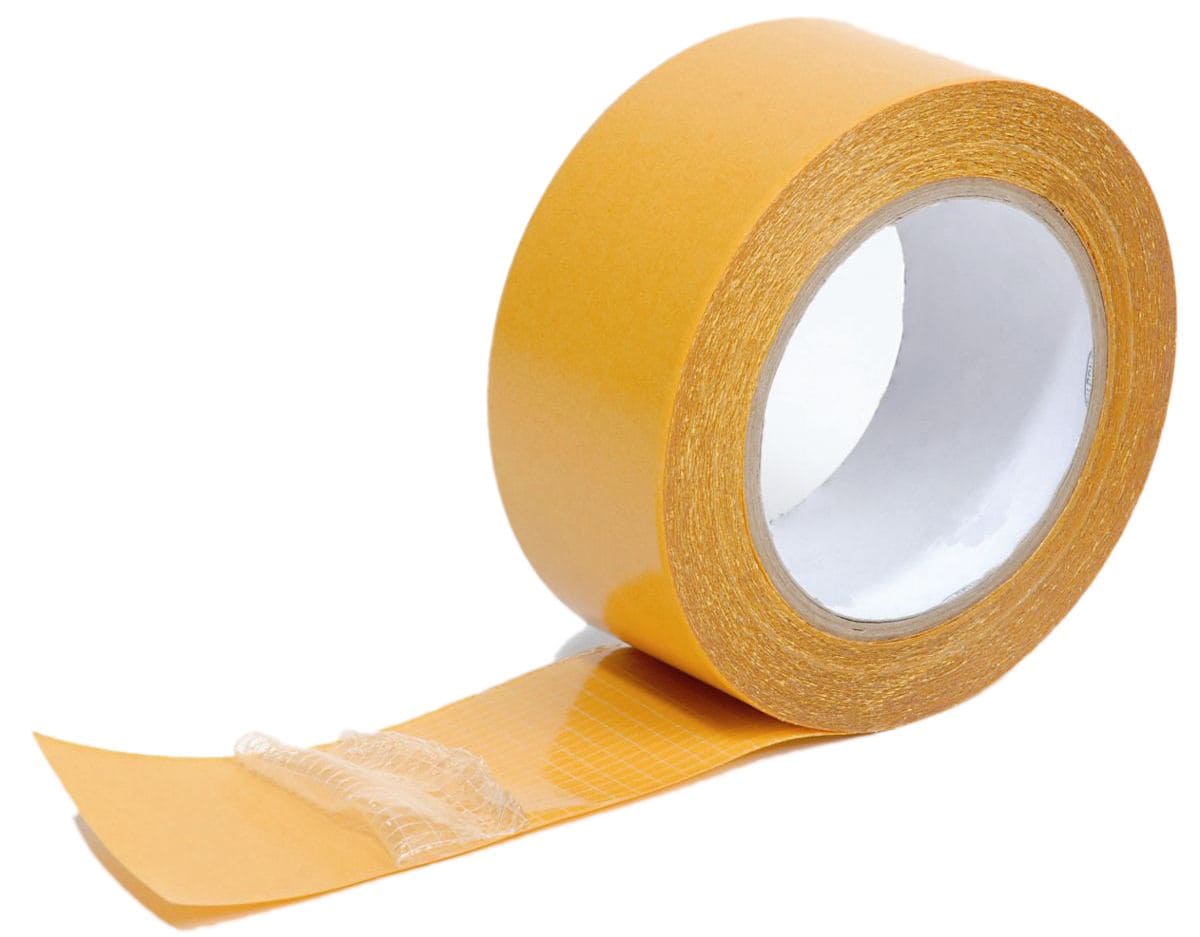 Helps to fix the façade and the main surface until they are screwed in place using screws. Experts recommend preliminary “trying on”, since an error of a few millimeters can lead to disastrous consequences.
Helps to fix the façade and the main surface until they are screwed in place using screws. Experts recommend preliminary “trying on”, since an error of a few millimeters can lead to disastrous consequences.
If the overlay is made by yourself, then you may need sandpaper for sanding the surface, an antiseptic for impregnation, and paint for applying to the ends or the entire surface of the facade.
Do-it-yourself installation of a dishwasher facade
There are several ways to install a decorative covering on a door. Some craftsmen prefer to mount the panel on equipment already built into the kitchen set. For others, it is easier to do the work separately, without the need to hang the door. Performing both types of manipulations is quite easy, especially since many manufacturers indicate in the instructions the sequence of actions that need to be performed.Internet users are provided with detailed instructions in videos that will help them navigate and do everything without time loss and other unwanted costs. Therefore, today you can do this procedure yourself. To do this, follow the following sequence of actions:
- We prepare the installation site. We pay special attention to the condition of the outlet; it must be grounded. To connect the device to the network, select an electrical cable of the recommended cross-section.
- We install the equipment in the right place at the right height. We secure the dishwasher handle.
- We make holes on the inside of the structure necessary to connect the door and panel. To do this, you can use a special template made of thin paper, where these places are indicated. The drawing can be left in place during drilling to avoid even the smallest error. You can use masking tape when making holes. We carefully monitor so as not to damage the external decorative surface.
- We install fastenings. To do this, remove the screws fastened at the factory and replace them with new ones. They are longer fasteners with nuts. Thanks to this, the facade will hold firmly. They are attached to grooves located on the body of the machine.
- We mount the handle and decorative elements on the sash. At this stage the work can be considered completed. Next, we check the tightness of the sash, how easily it opens and closes.
Tips for installing a façade
The following recommendations will help you avoid some mistakes and oversights.
- Be careful when choosing a façade.If the product is chosen incorrectly, you will have to adjust it to the required dimensions, which is extremely undesirable, or purchase a new one.
- Check that the fasteners are marked correctly. Otherwise, this will lead to the doors not closing well.
- Use measuring instruments. Only with a tape measure or ruler can you accurately determine the mounting locations. Do not use the "by eye" method.
- Choose screws of the optimal length. It should be such as to ensure reliable fastening of the panel and door, while the screws should not come out.
- Use a stencil. This device will help you make the markings correctly.
- Use an electric screwdriver. The tool will speed up the process significantly, which will save time and effort.
- Pay attention to the fastening of the handles. These parts are necessary in order to open the facade panel. It is very important that they are installed flush with the fittings on adjacent cabinets.
A dishwasher with an installed front will fit perfectly into any kitchen interior: from classic to high-tech. However, the work can be completed only after studying the necessary information and selecting materials and tools. If there is no appropriate practice or insufficient knowledge, it is better to entrust the work to specialists. Real craftsmen know the intricacies and features of the process, and will complete the work flawlessly and on time.







